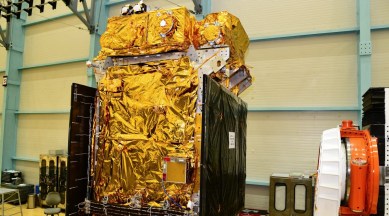Anonna Dutt is a Principal Correspondent who writes primarily on health at the Indian Express. She reports on myriad topics ranging from the growing burden of non-communicable diseases such as diabetes and hypertension to the problems with pervasive infectious conditions. She reported on the government’s management of the Covid-19 pandemic and closely followed the vaccination programme. Her stories have resulted in the city government investing in high-end tests for the poor and acknowledging errors in their official reports. Dutt also takes a keen interest in the country’s space programme and has written on key missions like Chandrayaan 2 and 3, Aditya L1, and Gaganyaan. She was among the first batch of eleven media fellows with RBM Partnership to End Malaria. She was also selected to participate in the short-term programme on early childhood reporting at Columbia University’s Dart Centre. Dutt has a Bachelor’s Degree from the Symbiosis Institute of Media and Communication, Pune and a PG Diploma from the Asian College of Journalism, Chennai. She started her reporting career with the Hindustan Times. When not at work, she tries to appease the Duolingo owl with her French skills and sometimes takes to the dance floor. ... Read More
After moon, ISRO turns to sun: India’s 1st solar mission looks at Sept launch date
Just like the ongoing Chandrayaan-3 mission, the satellite will go around the earth gathering speed and then slingshot towards the sun. It will then cruise the 1.5 million kilometres in around four months. And, then it will be inserted into a halo-shaped orbit around the L1 point.

AFTER TWO successful mission launches in July, including the Chandrayaan-3, the Indian Space Research Organisation (ISRO) is getting ready for its next big mission – to the sun.
According to sources, Aditya-L1 — India’s first mission to the sun — is expected to be launched in early September this year.
“Aditya-L1, the first space-based Indian observatory to study the sun, is getting ready for the launch. The satellite realised at the U R Rao Satellite Centre (URSC), Bengaluru, has arrived at SDSC-SHAR, Sriharikota,” ISRO tweeted on Monday.
Just like the ongoing Chandrayaan-3 mission, the satellite will go around the earth gathering speed and then slingshot towards the sun. It will then cruise the 1.5 million kilometres in around four months. And, then it will be inserted into a halo-shaped orbit around the L1 point.
The solar mission will not see the spacecraft actually go to the sun, it will instead create a space observatory at a point from which the sun can be observed even during an eclipse.
To get this unobstructed, continuous view of sun, the satellite will travel to L1 or Lagrange point between the sun and the earth. Lagrange points — there are five between any two celestial objects — are referred to as parking spots in space because gravitational pull of celestial objects equals force required to keep it in orbit.
THE back-to-back missions to the moon and sun will help establish ISRO as a serious player. This is the third phase of ISRO’s development. The first phase was about societal demands – remote sensing, communication etc – and the second was about commercial satellite launches.
“Even after travelling the 1.5 million kilometres, we would have covered only 10% of the distance to the sun. This will allow the main payload VLEC to look directly into the source of coronal mass ejection. Once at L1, it will be the best instrument observing the solar corona. Although there are observatories studying the solar corona even on ground, but the weather conditions and atmospheric interference does not allow it to see this as clearly,” said Prof Dipankar Banerjee, director of Aryabhatta Research Institute of Observational Sciences (ARIES), which will host the support cell for the Aditya-L1 mission.
He said, the closest a man-made object has gone to the sun is the Parker probe from NASA, however, the objectives of the mission were very different. “Since it is closer to the sun, it cannot directly look at the sun. Parker is actually turned away from the sun and observes the particles in the solar wave in that position.”
Aditya-L1 aims to study the solar corona, solar emissions, solar winds and flares, Coronal Mass Ejections (CMEs), besides carrying out imaging of the sun, round-the-clock, ISRO said.
After Astrosat, this is ISRO’s second astronomy mission/ observatory done in collaboration with scientific and research institutes. The main collaborators in the solar mission with seven payloads are Physical Research Laboratory, Ahmedabad; Indian Institute of Astrophysics (IIA), Bengaluru; Inter University Centre for Astronomy and Astrophysics (IUCAA), Pune; and the Indian Institute of Science, Education and Research (IISER), Kolkata.
In January, IIA handed over Visible Line Emission Coronograph (VELC) to ISRO, which will track CMEs, trace links between CME plasma and the magnetic field that drive solar eruptions and solar winds.
In June, IUCAA completed and handed over the Solar Ultraviolet Imaging Telescope (SUIT), which will provide full disk images of the sun in the 2000-4000 A wavelength range, observe the solar atmosphere slicing via different layers — these will help put together processes inside the solar surface.
Both VELC and SUIT are unique instruments built for the mission to the sun.
Anjali Marar works at the Raman Research Institute, Bengaluru